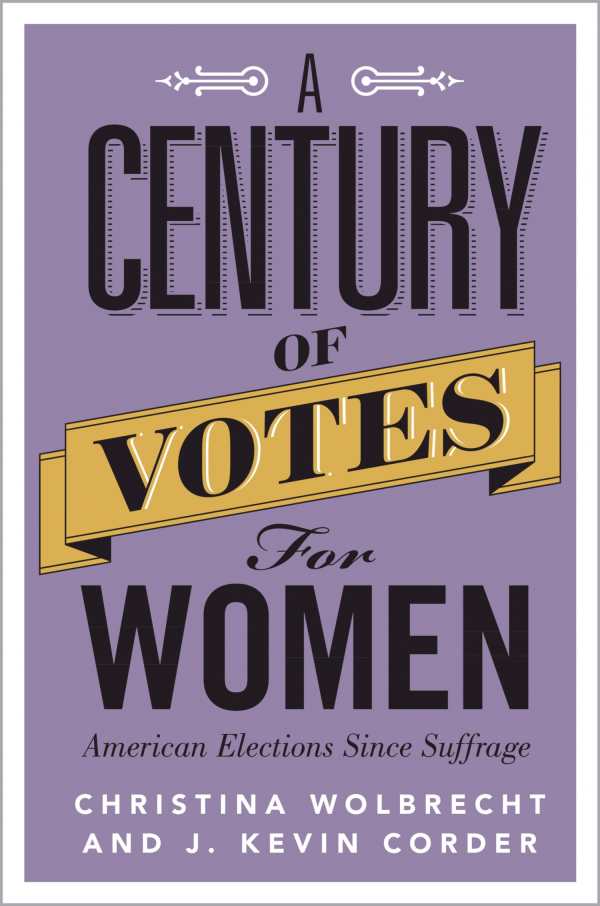A Century of Votes for Women
American Elections since Suffrage
In 2020, the Nineteenth Amendment turns 100, and Christina Wolbrecht and J. Kevin Corder’s A Century of Votes for Women examines its history and effects in direct, accessible terms.
Moving chronologically, the book first details the post-Civil War social changes that weakened traditional arguments against women’s voting rights. It shows that industrialization increased job and educational opportunities for women and dissolved notions that women were limited to their homes without exposure to meaningful outside knowledge. By providing this historical context, the book illustrates how cultural trends shaped women’s concerns and votes, as well as how their priorities and votes looped back to shape elections.
Viewing history as made up of distinct eras, each chapter begins with an overview of its era of concern before showing how women within it voted compared to people in other groups. This easy-to-navigate approach merges history and voting data to indicate larger themes and trends. In the process, the book dispels stereotypes about gendered voting priorities, including contemporary tendencies to presume that women are Democrats and that men favor Republicans.
The book is effective in showing that women’s voting priorities have changed over time, as well as that both major political parties have spun out policies that either attract or lose women voters. Clear graphs are used to explore these topics further, while descriptive subheadings build on larger points and broaden the text’s usefulness. Detailed footnotes that are drawn from a range of sources contemporaneous to the era in question enhance each section’s value.
When the Nineteenth Amendment became law, everyone, including its ardent supporters, wondered how such monumental change would play out. A Century of Votes for Women probes the historical record to give a thoughtful and interesting answer.
Reviewed by
Susan Waggoner
Disclosure: This article is not an endorsement, but a review. The publisher of this book provided free copies of the book to have their book reviewed by a professional reviewer. No fee was paid by the publisher for this review. Foreword Reviews only recommends books that we love. Foreword Magazine, Inc. is disclosing this in accordance with the Federal Trade Commission’s 16 CFR, Part 255.

